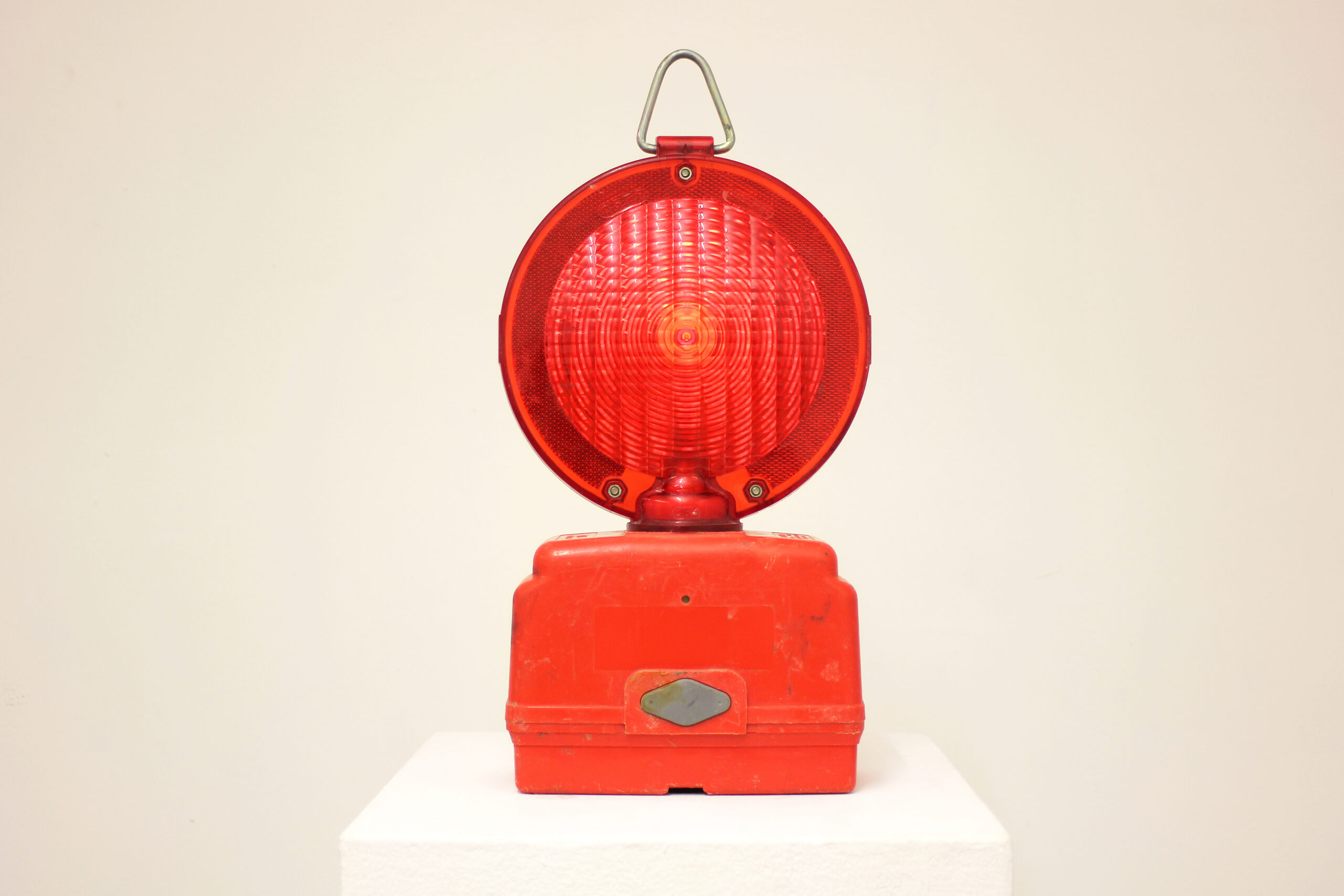The starting point for this series of works are symbols and signals that act on our everyday life.
UmFunktionssystem focuses on the manipulation and reinterpretation of urban sign systems.
Found objects such as orphaned objects, street signs or construction waste are stripped of their everyday function and take on new meaning through experimental and process-oriented production. Placed in dialogue with one another, these three-dimensional works make clear references to urban models, which they subvert in cunning and humorous ways, creating an attack on the built landscape.
A flashing light attempts to rebel, generating a new urban Morse Code – a visualisation of the city’s heartbeat; The sound of the city, in this case, the burble of a fountain, is transformed by the artist into a three-dimensional relief; A construction site barrier directs attention back to itself. Compressed into a square, instead of blocking the way it creates an optical stimuli:attraction; The company logo of an Austrian logistics company is converted into a pendulum. The emblamatic ‘Post Horn’, now silenced, is knocked ‘onto the ropes’; Completing the assault, a former construction light is soaked in black paint, thus rendered sculpturally KO.
Barely visible codes already exist in the built environment. Encrypted signs on house walls, doors and fences are daubed by gangs of thieves, to indicate that there is something here to steal. These graphic ‘Hobo-signs’ can only be understood in combination with their intended meaning. Gupfinger’s graphical overview presents the most common street slang, used since the 12th Century AD.
This series of works can be understood as a cross section of manipulated sign systems for public space. They also act as site-specific portaits, since immediate circumstances and local set pieces are included in the works.
